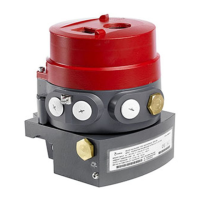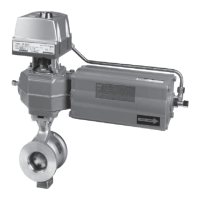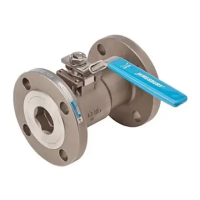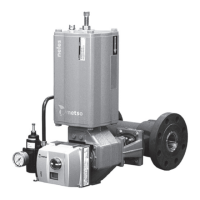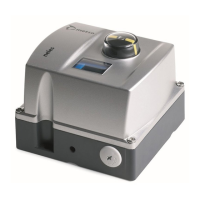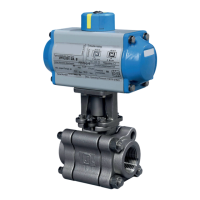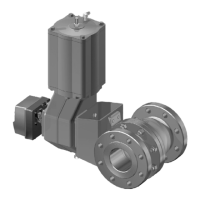10 2 BAR 70 en
4.4 Detaching preparation
If the actuator is mounted on a pipeline, following require-
ments must be check before attaching the actuator:
□ Ensure that errors are not caused due to removing the
actuator.
□ Test carefully whether a hot medium has flown through
the pipeline and whether the actuator is cooled off suffi-
ciently, so as to prevent any hazard due to extreme tem-
peratures.
□ Reassure yourself that the assembler does not face any
risks from the medium that has recently passed through
the on/off (butterfly) valve.
If you do not make the disassembly by yourself, warn the
qualified personnel of eventual risks.
4.5 Detaching
Proceed in the following sequence for dismantling the
actuator:
If the actuator installed on / in the pipeline is to be
changed, ensure that:
□ The pipeline is pressureless and the relevant valve is dis-
engaged from the process.
□ Ensure that the valve is in a defined position – “closed”
in general.
□ Disconnect the energy supply to the actuator. In addition,
press the EMERGENCY STOP switch for energy supply to
the actuator or activate the remote control, so that no
one can reconnect the energy supply by mistake.
□ Secure the actuator using secure ropes.
□ Loosen the screws between the bracket and the actua-
tor and then screw them carefully perpendicular to the
drive shaft of the on/off (butterfly) valve.
□ Transport the actuator, so that it does not move during
transport and eventually get damaged.
5Tools
No special tools are required for maintenance work on the
valve.
6 Ordering spare parts
For ordering spare parts, the following information is neces-
sary:
□ Unique / Identification number of the valve (from rating
plate – see Figure 3)
□ Machine name, start-up date
□ Type designation of the valve (from identification plate
– see Figure 3) with size and pressure specification
□ If possible, a photo of the identification plate
□ ID number and number of "Spare sets" required.
If you control the actuator using a remote control,
then you must mount a device at the drive to inter-
rupt the energy supply for reasons of safety (for
example, emergency stop).

